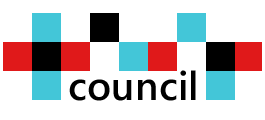-
New Instruments of Governance for our Societies (written 2012)
Alex Gluhak and Rob van Kranenburg: Abstract— In this paper we argue for ICT technologies to play a more prominent role in supporting the governance of our society. The Internet together with Web2.0technologies such as social media have enabled a shift of power towards individuals in recent years, making governance of our societies increasingly difficult…
-
Dear Rob and the creative collective known as the Council on the Internet of Things
William Morrish: Instead of writing an article or essay for a journal, blog, or book, I turn to the concept of writing a letter, which is part information, and part sharing our human journeys as we spin around the sun, hopefully, “creating a better place than that which we inherited,” as the last line of…
-
The Core of the Fourth Revolutions: Industrial Internet of Things, Digital Twin, and Cyber-Physical Loops
Johannes Vrana: Like with the previous revolutions the goal of the fourth revolution is to make manufacturing, design, logistics, maintenance, and other related fields faster, more efficient, and more customer centric. This holds for classical industries, for civil engineering, and for NDE and goes along with new business opportunities and models. Core components to enable…
-
Cyber-Physical Loops as Drivers of Value Creation in NDE 4.0
Johannes Vrana: Across so many industries, non-destructive evaluation has proven its worth time and again through quality and safety assurance of valuable assets. Yet, over time, it became underappreciated in business decisions. In most cases, the data gathered by NDT is used for quality assurance assessments resulting in binary decisions. And we seem to miss…
-
NDE 4.0—A Design Thinking Perspective
Johannes Vrana: Cyber technologies are offering new horizons for quality control in manufacturing and safety assurance in-service of physical assets. The line between non-destructive evaluation (NDE) and Industry 4.0 is getting blurred since both are sensory data-driven domains. This multidisciplinary approach has led to the emergence of a new capability: NDE 4.0. The NDT community…
-
Industry 5.0 – Towards resilience, sustainability and human centricity
Sourav Rout: Right now, Industry 5.0 is in an incipient phase; that is, we’re still immersed in improving and optimizing Industry 4.0 through the use of technologies currently on the market. Nevertheless, the Fifth Industrial Revolution aims to transition towards industry that’s more resilient, sustainable, and human-centric. Industry 5.0 benefits workers, companies, and our planet. This…
-
Digital transformation and its influence on people management
Sourav Rout: While technology has enabled a revolutionary shift to remote and hybrid work over the past two years, these solutions have only solved the simpler problems of getting work done. The more complex challenges involve developing new and better ways of working together and growing people — as individuals and teams — to achieve…
-
Ongoing and current challenges in the medical domain with regards to the IoT topic
Christoph Thümmler: Although we have seen additional IoT enablers which we did not dare to dream of 10 years ago – in particular the entire evolution in mobile radio technology (4G, 5G – now 6G), the level of IoT development in the medical domain is at best poor – in many areas not existing at…
-
IoT.Business.News: IoT startups received record funding in 2022, new research reveals
A new analysis of startup funding in the IoT sector in 2022 has revealed that the average amount of investment in Internet of Things companies is at an all-time high in Europe and the highest in over a decade in the United States.IoT startups receive record funding despite venture capital cool-downThe average amount of capital…
-
The metamorphosis of objects and human subjects in the Internet of Things
By Sophie Le Pallec, Rick Bouter, Gérald Santucci: Julian Bleecker’s engineering vision complements the one of science fiction design agent Bruce Sterling. He argues that once things are connected to the Internet, “they can only but become enrolled as active, worldly participants by knitting together, facilitating and contributing to networks of social exchange and discourse,…
